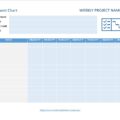A GAP Analysis explains the difference between the expected performance of a business, its operations, and the actual outputs of such business. Further, a GAP Analysis shows that a system is performing below the general standards. It may be compulsorily to check it for optimum performance. As the name implies, in an everyday language, it shows that there is a gap to be bridged. In the analysis, operational and structural deficiencies are identified and studied, and the required procedures are needed to rescue the business and get it going at its best.
GAP Analysis can also be used by project managers and small businesses to improve processes and standardize their activities. Once the gaps are identified, the quality of work and inputs needed to address them can be ascertained and provided.
What is GAP Analysis?
Gap analysis helps you evaluate actual performance against potential performance. The differences are identified using gap analysis, and this is a systematic method of addressing them. Whether it is about evaluating the skills of an employee or improving the business processes or IT systems, doing gap analysis enables you to make appropriate plans that would lead to improved results.
Steps to Perform a GAP Analysis:
- Define Focus Areas: Pinpoint the particular areas within your business that you wish to enhance including consumer pleasure, product preciseness, and market trend.
- Assess the Current State: Assess your current position by examining the surroundings. Utilize techniques like the SWOT technique or PEST technique so as to show you what you are capable of doing today.
- Identify the Desired Future State: One could be setting clear goals and expectations for oneself about the future. Like improving customer satisfaction by 20% or reducing operational costs by 15%
- Analyze the Gaps: Measure your current status against your ideal situation and recognize the existing gaps, which may include a lack of resources, ineffective procedures, or deficiency in skills.
- Develop an Action Plan: After locating the gaps, generate an incremental plan as a solution. Establish benchmarks and timelines that would act as a basis of measurement in following up on the same.
Types of GAP Analysis Templates We Offer
To cater to different needs, our GAP analysis templates are diversified. Every single template can be gotten in Word, PDF, or Excel format thereby making it user-friendly. Below are some of the most popular templates:
- Skills GAP Analysis Template
You should compare your team’s current skills with what will be required in case you decide to expand the firm in the future. This is suitable for HR departments willing to specify areas where employee training should be done or the goals that are to be achieved through hiring additional staff. - Process GAP Analysis Template
It is ideal for enterprises aiming to make their operations more efficient. This template helps you to assess where there is a need for change by comparing your present processes with industry standards. - IT GAP Analysis Template
If you are a company that wants to improve its technology infrastructure, this template can be a significant help in identifying areas where software, firmware (hardware), and security fail. - Market GAP Analysis Template
Created for companies trying to figure out new market possibilities. This particular template facilitates evaluating market demand gaps, competitor offers as well as customer expectations. - Vendor GAP Analysis Template
Make sure you evaluate how well your suppliers are performing and determine whether or not there are any deficiencies in the quality of their services, prices, or products offered. This sample template assists you in making smart choices on whether to keep or change a supplier.
Why Choose Our Templates?
Customizable: You can easily modify them to exactly fit the unique requirements of your organization, in Word, Excel, or Google Docs.
Action-Oriented: Every template has an inbuilt section that has a detailed plan of action so that you can convert ideas into steps that can be taken to improve.
Visually Appealing: The templates use clean and readable designs that include charts and graphs where appropriate to guarantee your GAP analysis is both professional and accessible.
Free GAP Analysis Templates & Examples (Word, Excel):
Here are previews and download links for these Free GAP Analysis Templates.
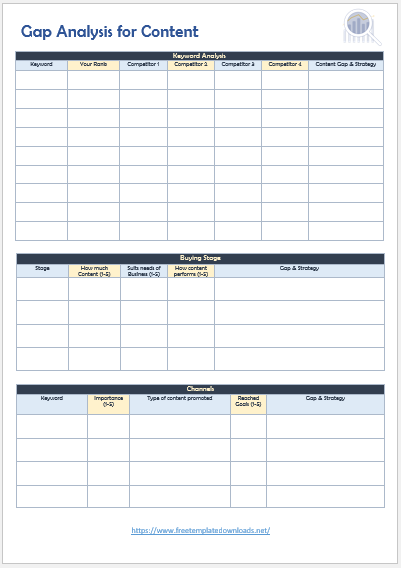
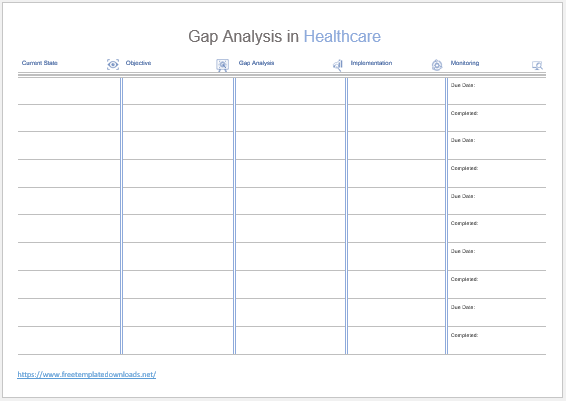
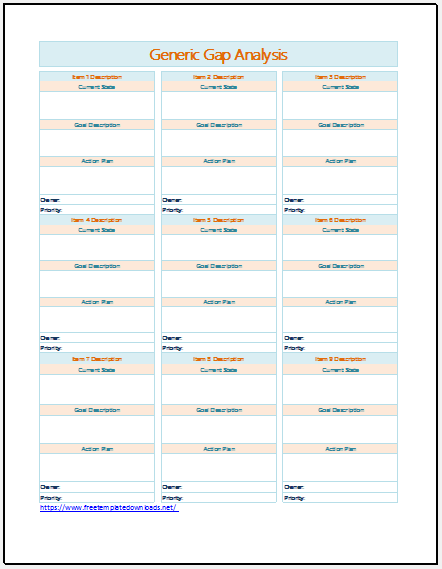
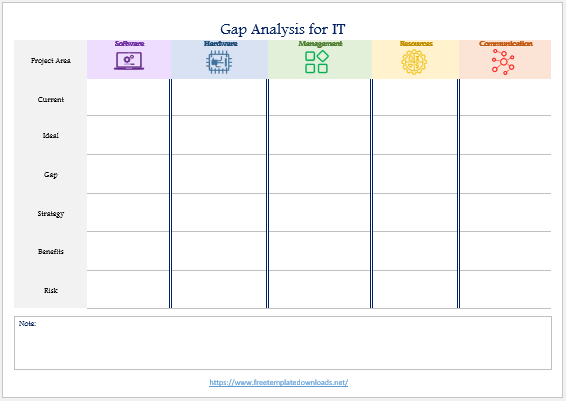
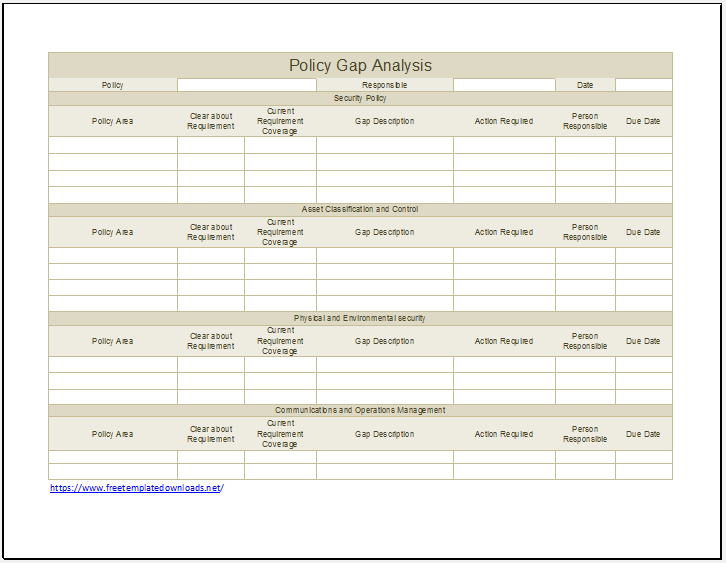
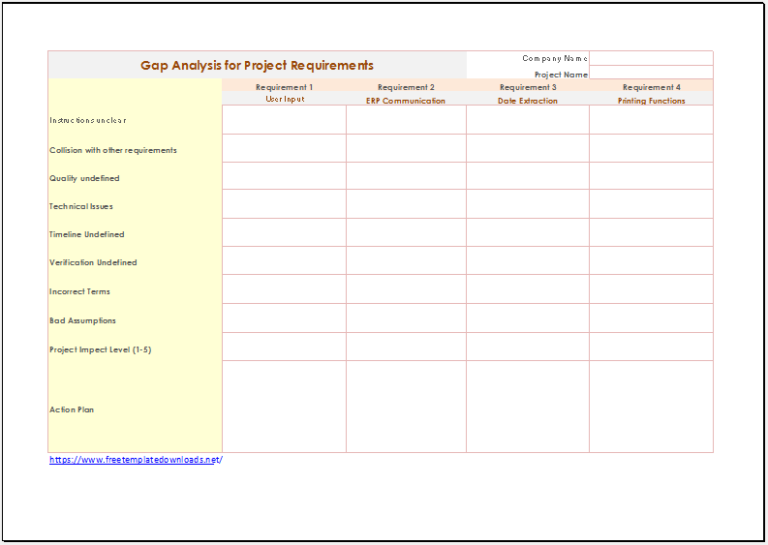
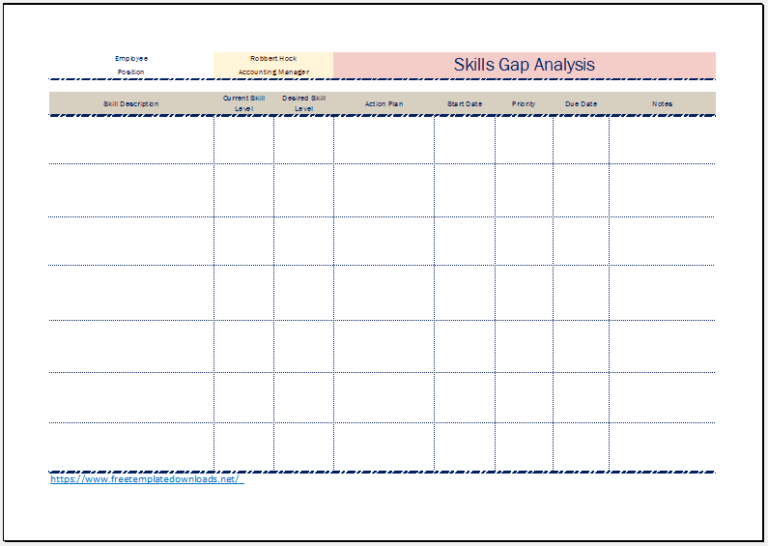
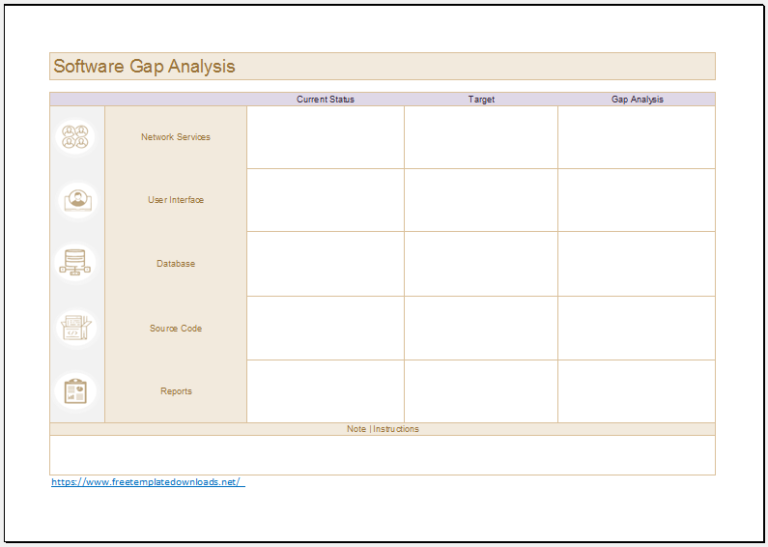
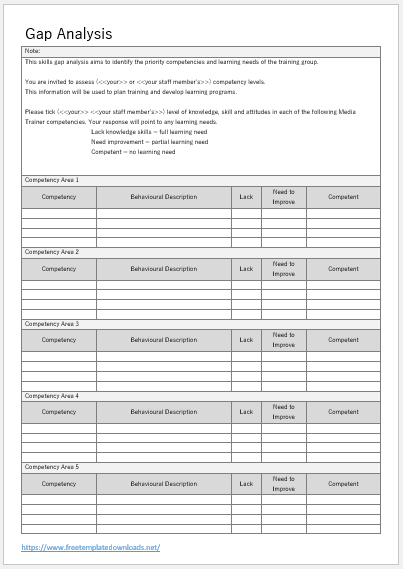
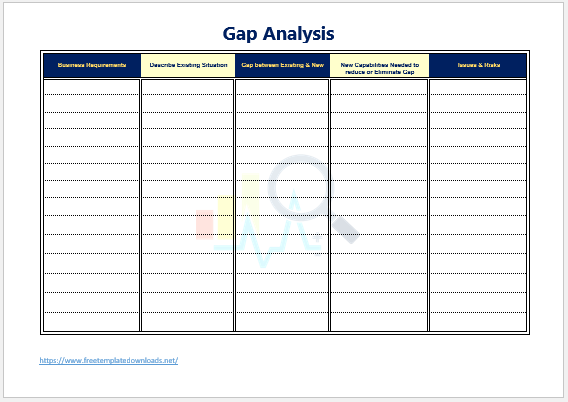
Example: How to Use the Skills GAP Analysis Template
Step 1: Define the job roles and skills required for future projects or growth.
Step 2: Evaluate the current skill level of each employee.
Step 3: Identify gaps between the current skill set and what is required.
Step 4: Create a training or recruitment plan to bridge the gaps.
Step 5: Set measurable KPIs, such as certifications earned or project success rates, to track progress.
Key Performance Indicators (KPIs) for GAP Analysis
Apart from templates, we offer guidelines on how to set Key Performance Indicators (KPIs) in order to evaluate the effectiveness of your gap analysis. KPIs allow you to follow up on how things are moving on and ensure that all gaps are being checked accordingly. Here are a few examples of KPIs you can use:
- Customer Satisfaction Rate: Measure customer feedback before and after implementing changes.
- Employee Skill Improvement: Track the number of employees who complete training programs or obtain certifications.
- Process Efficiency: Measure the time saved or costs reduced after process improvements.

